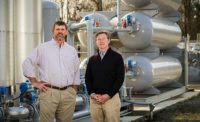The wind giveth and the wind taketh away — that may not be how the Bible verse reads, but to employees at Cooper Farms, this version holds a measure of truth beyond the Bible verse
Rebuilding the right way
Powering up
Added investments, surging growth
Lighting the way
BY ANDY HANACEK, EDITOR-IN-CHIEF






Report Abusive Comment